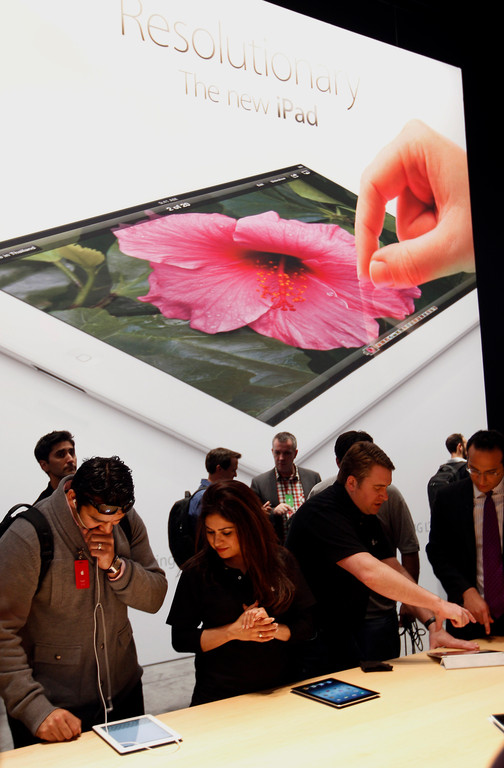
NEW YORK – Verizon Wireless is poised to get a bigger boost from Apple Inc.’s new iPad than competing wireless-service provider AT&T Inc., even though both carriers will be the first in the U.S. to sell the tablet, unveiled Wednesday.
Verizon Wireless will probably sell 3 million to 4 million new iPads this year, while AT&T will sell about 2 million units, said Kevin Smithen, an analyst at Macquarie Securities USA Inc. The iPad is designed to work on the companies’ next-generation wireless networks, based on a technology called long-term evolution, or LTE.
AT&T’s LTE network isn’t as extensive, covering fewer potential customers. Verizon Wireless also lets subscribers turn their iPad into a mobile hot spot, a capability not yet possible with AT&T. As a result, Verizon Wireless customers may be able to make more use of their Apple tablets, Smithen said.
“Verizon is going to benefit more,” he said. “The iPad could mean pretty significant growth for Verizon, because they have good LTE coverage.”
The Verizon Wireless LTE network covered more than 200 million potential customers at the end of last year, the company said in January. AT&T, based in Dallas, said that month that it reached 74 million would-be users with LTE.
“Competitively, Verizon Wireless’s more extensive LTE footprint gives it a modest marketing advantage,” James Ratcliffe, an analyst at Barclays Capital, wrote in a report Thursday.
Even when AT&T customers are outside an area covered by LTE, they “are still going to have a very fast experience,” said Mark Siegel, a spokesman for AT&T.
More data purchasing
Many owners of the iPad 2 use the tablet on free Wi-Fi networks at homes, offices and cafes to avoid costly wireless data charges. That’s likely to change as subscribers seek to take advantage of the fuller range of iPad capabilities. As many as 30 percent of purchasers of the new device will use it on carriers’ networks, up from less than 20 percent for prior- generation iPads, Smithen said.
Verizon Communications declined 0.3 percent to $39.11 at 10 a.m. Eastern time, while AT&T was unchanged at $31.
Portable hot spot
An average owner of the new iPad will use twice as much data as users of prior-generation iPads, Chetan Sharma, an independent analyst, said in an interview. As many as 10 percent of those owners may look to upgrade to a more expensive data plan, to allow for higher data usage, Sharma said.
“The new LTE is much faster,” Sharma said. “The performance and user experience will be better. I expect the consumers will use it more.”
The new iPad will have a faster chip and a sharper screen, which will make it better for viewing video and graphics.
Verizon’s iPad will also let owners turn it into a hot spot, to which other devices can connect to surf the Web. AT&T’s iPad doesn’t currently have this capability, but is working with Apple to offer it in the future, AT&T’s Siegel said.
As data usage of their networks continues to skyrocket, many U.S. wireless carriers have moved to new broadband technologies like LTE to keep up with demand. They also began capping customers’ monthly use and raising prices. Wireless-plan prices may rise by 5 percent a year, Oppenheimer & Co. analyst Tim Horan said in an interview.
Earlier this month, AT&T said it will start slowing data speeds of customers with unlimited wireless plans who use more than 3 gigabytes of data a month.
The strain on the global mobile networks more than doubled last year, as consumers began watching more mobile video and using tablets, according to networking-equipment maker Cisco Systems Inc.










